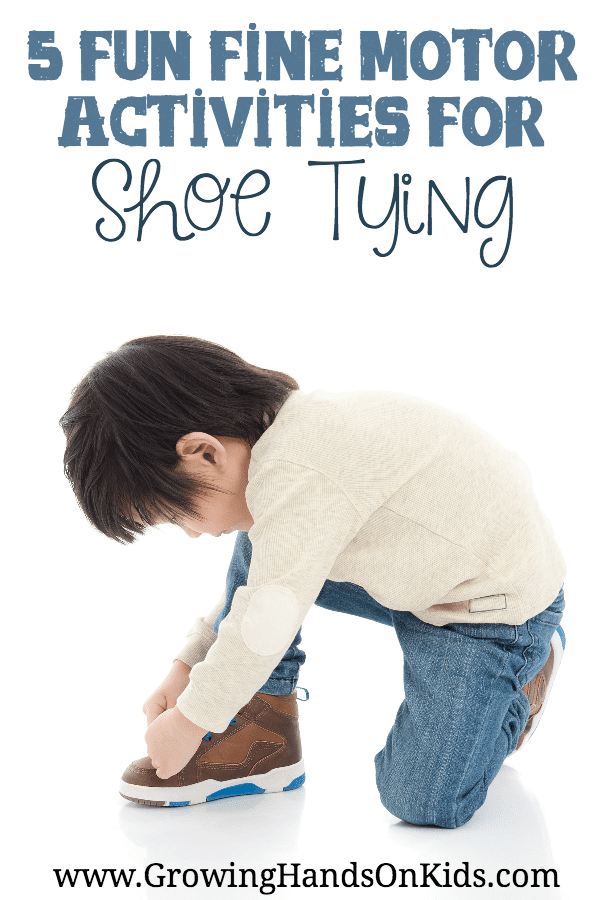5 Fun Fine Motor Activities for Shoe Tying
Affiliate and Referral links are used below to promote products I love and recommend. I receive a commission on any purchases made through these links. Please see my disclosure policy for more details. As an Amazon Associate, I earn from qualifying purchases.
Are your kids learning how to tie their shoes yet? We aren't there quite yet with Ellie, but there are many skills she can work on now that will help her learn to tie her shoes later on. Today I have teamed up with Adapt Ease to share some fun fine motor activities for shoe tying.
This is a sponsored post on behalf of Adapt Ease. I was compensated for my time and provided products in order to write this post. All thoughts and opinions are my own.
Learning to tie shoes can be frustrating to teach for parents and learn for kids. Typically a child's fine motor skills are not developed well enough to learn this skill until 4 or 5 years old. With velcro becoming the norm in kids' shoes, many are learning even later.
There are some basic skills though that you can work on long before your child learns to tie their shoes to help give them a great start with this important life skill (or ADL = activity of daily living in Occupational Therapy terms).
The skills your child will need to learn to tie their shoes include some of the following:
- Bilateral coordination
- Hand and finger manipulation and dexterity
- Visual motor skills
- Visual perception
- Hand strength
5 Fun Fine Motor Activities for Shoe Tying
For many of these activities, I am going to be featuring the Grasp and Match Occupational Therapy Fine Motor Skillset from Adapt Ease. They also carry some really neat shoe laces that I will share at the end if you have a child struggling with learning to tie their shoes.
- Hand strengthening through matching colors – Using the clothes pins and colored rings above and simply pinching the pins onto the rings is a great hand strengthening activity as well as working on the finger muscles for pinching. This will help with holding on to a shoelace later on.
- Ring toss for visual perception and visual-motor skills – Using the rings above, take a paper plate and color it with the corresponding colors. Place the paper plates out in various areas of the room and use a piece of washi tape to make a line for the child to stand behind. Have them toss a colored ring towards the paper plate that matches that color. This game will help them to work on grading their muscle movements and learning how much pressure to put through their arms and fingers to throw the ring so it will hit the target.
- Painting with cotton balls and clothespins for hand manipulation, dexterity, and strengthening – Use the clothes pins to grab a cotton ball and dip it into the paint. Then paint a picture of their choice or choose a printable or color by number type of painting page. They will need to use different types of grasps on the clothespins and this will help with finger dexterity and hand manipulation.
- Spinning rings for bilateral coordination skills – Take a piece of lacing string or even better a shoelace and thread all the rings onto the string. Using both arms, move the string in a circular motion until the rings begin to spin around the string or lace. How fast can they go? How slow can they go? Great bilateral coordination and visual motor skill practice with this one.
- Visual cues for shoe tying and clothespins – Take pictures of yourself or an older child doing each step of how to tie a shoe. Print the pictures out into small square shapes and have your child use the clothespins to squeeze and hold each picture. Then arrange the pictures in the order they need to go to complete the task. Not only does this help them to think through the task and how to complete it, but it also provides some visual cues for them to work on the skill independently.
Despite all your best efforts, your child may still struggle with tying shoes and could use some help with visually discriminating between the laces. It is hard even verbalize which shoelaces to pick up and when to loop or push through when all shoelaces look the same and there is no way to distinguish them. Shoelaces are also typically very small and hard for little fingers and hands to hold on to.
This is where two-colored laces can be helpful. And Adapt Ease has some great ones for you to try. The Two Colored Training Kids Shoe Laces are extra wide so it's easier for little hands to grab plus they are two-toned which means it is easier for your child visually to use them.
Adapt Ease provides Occupational Therapy tools and items for kids to work on fine motor, visual motor, and visual discrimination skills. You can find them on Amazon and Pinterest.

Heather Greutman, COTA
Heather Greutman is a Certified Occupational Therapy Assistant with experience in school-based OT services for preschool through high school. She uses her background to share child development tips, tools, and strategies for parents, educators, and therapists. She is the author of many ebooks including The Basics of Fine Motor Skills, and Basics of Pre-Writing Skills, and co-author of Sensory Processing Explained: A Handbook for Parents and Educators.




These are great exercises! I like the bilateral coordination spinning rings. Not sure he can do that so we will give it a try to see what happens. Maybe bring some to the playground to invite some peers to play. That’s always much more fun than solitary play:)